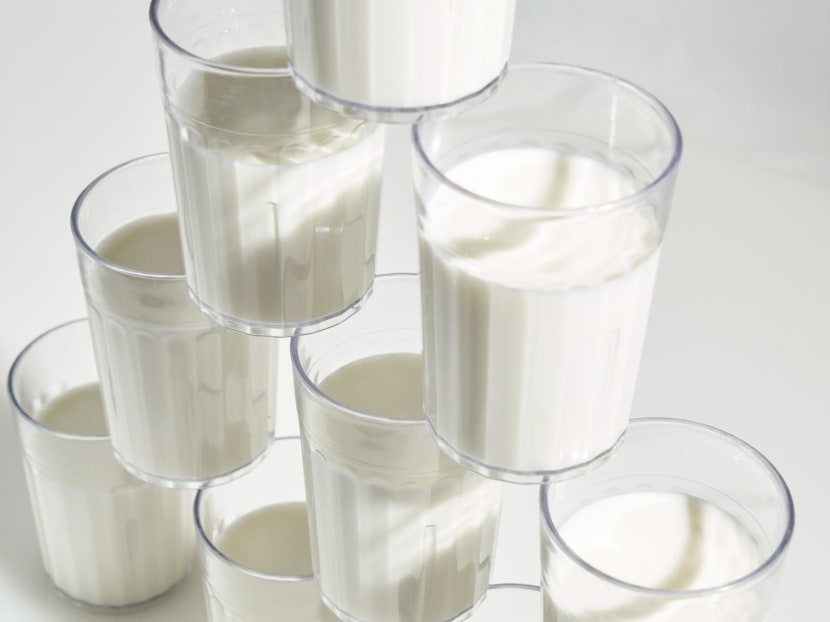Does drinking milk actually make your bones stronger?
The drink has long been touted as essential to good health. But the science is more complicated.

(Photo: The New York Times/Joyce Lee)
For generations, people have been told – through school nutrition programmes and advertising campaigns – that milk is an essential part of a healthy diet.
Key to that narrative was that milk builds strong bones. Your bones are made of calcium, and one cup of whole milk contains about 300mg of this nutrient. So drinking three cups per day, the thinking went, must make them resilient.
But that message was built on short-term studies and pushed by the dairy industry, said Dr Walter Willett, a professor of epidemiology and nutrition at the Harvard TH Chan School of Public Health.
With over a third of people in the United States having trouble digesting lactose, nobody needs to drink cow’s milk, said Christopher Gardner, a nutrition scientist and professor of medicine at Stanford University. Getting enough calcium is still important, especially for some high-risk groups, but there may be better sources.
WHAT DOES MILK DO TO BONES?
Calcium is an essential nutrient, critical for nerve, muscle and heart function, as well as bone and tooth health. However, as with most nutrients, your body needs only a certain amount. The US dietary guidelines recommend that adults consume 1,000mg to 1,200mg of calcium per day, but this threshold is debated among experts – and other countries, like the United Kingdom, recommend only 700mg.
Past clinical trials have found that when children and adults who weren’t eating enough calcium increased their consumption, whether via dairy foods or supplements, their bone densities increased by up to 3 per cent. But those gains were too small to meaningfully reduce fracture risk, Dr Willett said. And other studies have found that people must consume extra calcium every day to maintain those gains, which may not be worth the investment, he added.
“The idea that we need lot of calcium is based primarily on very short-term studies looking at calcium balance over a few weeks,” Dr Willett said. And an analysis of 79 milk papers published between 1999 and 2003 found that over a third received funding from the dairy industry.
There’s even evidence that people can have strong bones without drinking milk. According to one review published in 2020, people who live in countries with the lowest rates of hip fractures also tend to drink the least milk. And analyses of multiple studies have found that drinking more milk was not associated with lower fracture risk.
Of course, studies like these can’t prove any link between milk consumption and bone health, said Dr Rene Rizzoli, the former head of the bone diseases department at the University Hospitals of Geneva. To show that milk consumption prevents fractures, for instance, you would need clinical trials on the topic, which have not been done.
Ultimately, your exercise and broader diet may have more influence over your bone health. So don’t count on milk alone to eliminate your fracture risk, Dr Rizzoli said.
DO SOME PEOPLE NEED MILK MORE THAN OTHERS?
Experts say that children ages 9 to 18 need more calcium than any other age group to support their growth; as do older adults, since bone density tends to decrease after age 50.
When a person’s calcium levels are low, the body can adapt by pulling more calcium from food and rejecting less as waste, Dr Gardner said. But these mechanisms decline with age, and when the body isn’t getting enough, it pulls more calcium from bones, he added, weakening them.
In a 2021 clinical trial, researchers assigned more than 7,000 older adults living in assisted care facilities in Australia to either maintain their usual two servings of dairy per day or increase their consumption to 3.5 servings per day. Over the two-year study, the higher-dairy group had an 11 percent reduced risk of falls and a 33 percent reduced risk of fractures.
The researchers also found that they maintained more weight, muscle mass and bone density than the lower-dairy group, though the team couldn’t determine whether their lower risk of falls and fractures were because of stronger bones or something else, said Sandra Iuliano, a nutritionist at the University of Melbourne.
Regardless, milk can be one of the most convenient sources of calcium, along with other nutrients like protein, potassium and phosphorous, said Jeri Nieves, a nutritional epidemiologist at the Hospital for Special Surgery in New York City. Other foods – like tofu, bony fish, leafy vegetables and fortified orange juice or plant-based milks – are good sources too, Dr Nieves said, even if they have less calcium per serving.
The best option for calcium, however, might be fermented dairy products like yoghurt and cheese. They support the gut microbiome, tend to be better tolerated by people sensitive to lactose and are more strongly tied to lower fracture risk than milk, Dr Rizzoli said. They’re also packed with calcium – a 1.5-ounce serving of Cheddar cheese, for example, has the same amount as a cup of whole milk.
“If you like milk, drink it. If you don’t like milk, or if you can’t tolerate it, use some other source,” Dr Nieves said.
By Simar Bajaj © The New York Times Company
The article originally appeared in The New York Times.




